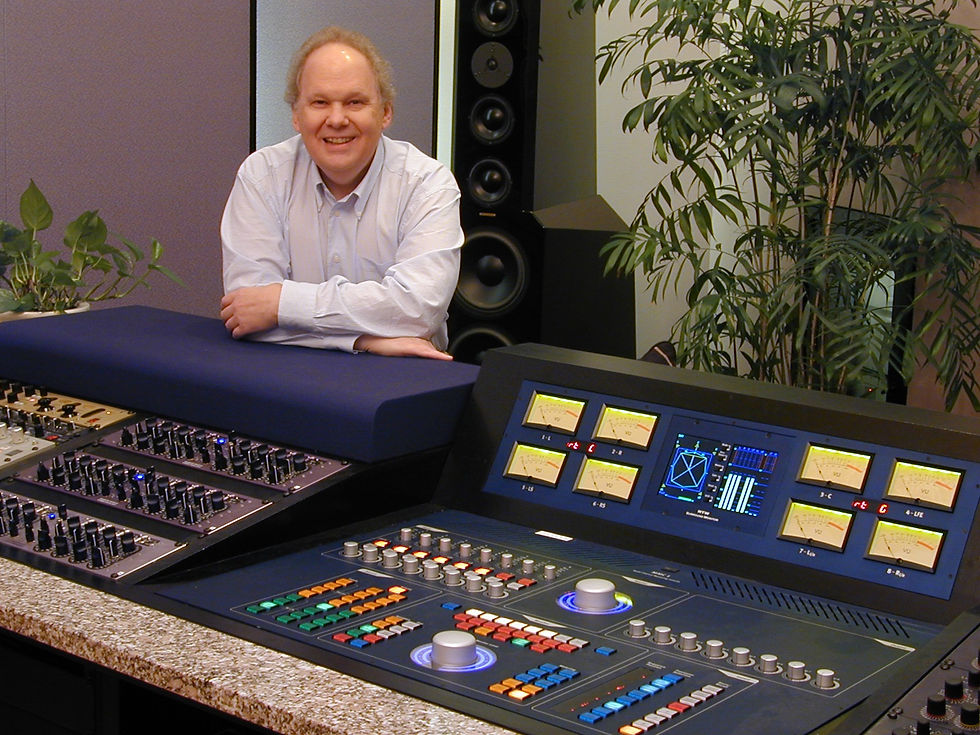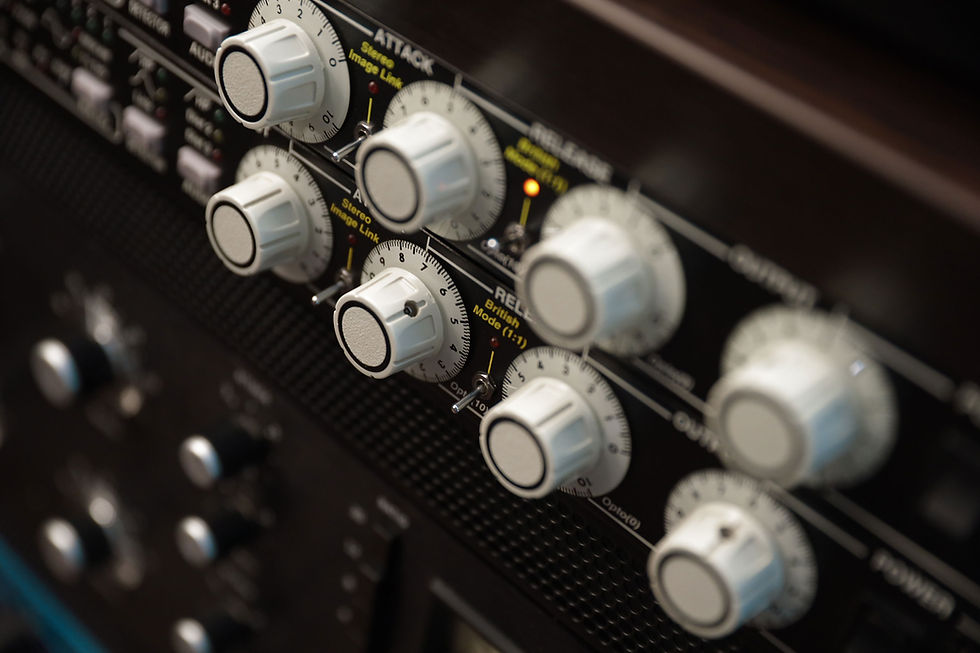Mastering Music: A Hundred Years of Evolution
- Keerthi Vasan

- Oct 12, 2024
- 5 min read
Mastering is often seen as a mysterious art, but the role of a mastering engineer has become more accessible and easier to grasp. Today, almost anyone can learn how to master audio and determine if their creation is ready for release.
In the past, mastering engineers evolved from “cutting” or “transfer” engineers, who were responsible for transferring recordings from tape to vinyl. Their primary focus was on optimising the audio to ensure that a vinyl disc would play at a reasonable quality without causing the needle to skip. The job was more about solving technical issues related to disc cutting than making creative adjustments. However, the 1980s brought the introduction of compact discs and digital mastering, which allowed for nearly limitless audio processing. This shift expanded the mastering engineer’s role to include not just corrective measures, but also creative enhancements, making mastering an essential step in finalising the sonic quality of a project.
Today, mastering is both a technical and creative process. In this blog, we’ll explore the evolving role of the mastering engineer, how it has developed over time, and why mastering your tracks on a properly calibrated monitoring system is more important than ever.
The History of Mastering
In the early days of recording, there were no distinct roles; a single engineer managed the entire recording process from beginning to end. Early recordings involved simply placing one or a few microphones in front of a live band, balancing the sound within the room, and cutting the performance directly onto a wax or acetate disc. This disc would then be used to create a stamper for 10-inch shellac or vinyl records that played at 78 RPM.
The landscape changed in 1948 when Ampex introduced the Model 200 tape recorder, leading to the emergence of "transfer engineers" who specialised in transferring recordings from tape to vinyl masters for reproduction. In 1954, the Recording Industry Association of America established the RIAA equalisation curve, which became the global industry standard for vinyl records. This curve ensured a flat frequency response during playback while reducing high-frequency noise, albeit at the cost of amplifying low-frequency rumbling. To mitigate issues with bass-heavy recordings causing the stylus to jump out of the groove, engineers began applying corrective EQ during the vinyl-cutting process to produce better-sounding and more reliable records.

An Apex 200 tape machine at Capitol Studios
This era marked the dawn of modern mastering, as the role of the mastering engineer evolved from a purely technical function to one that embraced creativity. During the 1950s, engineers like Steve Hoffman gained recognition for enhancing master recordings with creative tools such as EQ and compression. Hoffman became well-known for his work with jazz icons, including Miles Davis, Ella Fitzgerald, and The Beach Boys.
Before going into the next topic, Check out our DIPLOMA Certified courses on our homepage https://www.rmmusicstudios.net/ . For more information regarding our courses feel free to contact +91 9384674211 or mail us at rmschoolofmusic@gmail.com
Thank-you.
Stereophonic Sound
In 1968, Sterling Sound became the first studio in the United States to cut stereo discs, which opened up exciting new creative opportunities for transfer engineers. They could now adjust stereo width, frequency balance, and dynamics. Their responsibilities expanded beyond simply transferring audio recordings from one format to another; they also aimed to enhance fidelity during the process. As engineers took on more creative roles, the term "transfer engineer" eventually transformed into "mastering engineer.

Bob Ludwig at Gateway Mastering
Bob Ludwig, renowned as one of the first independent mastering engineers, started his career in the 1960s. He has mastered projects for over 1,300 artists, accumulating more than 3,000 credits and over 25 Grammy nominations. His impressive roster includes iconic acts such as The Rolling Stones, Queen, Def Leppard, and Coldplay. Ludwig has worked with nearly every analog and digital recording format for all major record labels and continues to operate his facility, Gateway Mastering, in Portland, Maine.
Going Digital
The compact disc’s debut in 1982 triggered one of the biggest disruptions in audio history: the shift to digital audio, which significantly expanded the role of mastering engineers. Pioneers in digital audio production included companies like AMS, Waveframe, Fairlight, and New England Digital, along with early computers such as the Apple II, Atari ST, and Commodore. In 1989, Digidesign (now part of Avid) introduced the first version of Mac-based Pro Tools software, then known as Sound Tools, making digital audio production accessible to studios of all sizes.
Digital audio formats provide enhanced dynamic range and a higher signal-to-noise ratio compared to analog formats, while also enabling mastering engineers to boost a track’s perceived loudness. Artists and labels soon realized that louder tracks were more appealing to listeners and radio programmers, leading to increased demand for louder masters. However, this often came at the cost of musicality, dynamic expression, and the introduction of distortion.
If you want to mix and master your music with our faculty member Keerthivasan—who has worked on projects like Maharaja, Chithaa, Kalvan, and more—this is your chance! His expertise and refined musical taste add a unique flavour to every track, ensuring your songs reach their fullest sonic potential.
Feel free to contact us - 9384674211
Thank you!
Modern Mastering
Self-releasing music is possible for more artists and creators than ever, but digital distribution requires expertise in a range of ever-evolving topics. While almost anyone can develop the skills to successfully create great-sounding mixes and distribute the files through an aggregator, it’s wise to enlist a mastering engineer with the expertise and experience to optimize your music for distribution. Mastering engineers take responsibility for not just the sonics of your music, but the proper encoding of the files. There are four key areas that mastering entails.

First, mastering engineers have the opportunity to shape the sonics of the final product, correcting any frequency imbalances, optimizing the dynamic impact of the recording, and ensuring that a particular song, album, or playlist competes artistically with the rest of the world. This step requires a keen ear, top-shelf audio processors, respect for the intention of the artists involved, and most importantly, an accurate monitoring environment to ensure that the master sounds great everywhere.
Second, mastering engineers provide the final quality control step before distribution. The audio files are carefully examined for technical flaws ranging from sloppy edits to noises and artifacts that may have been created or amplified during production, mixing, and mastering. Many artists distribute their own music, making the quality control aspect of mastering particularly important. Nobody wants to release a song with a glitch, like an embarrassing click, pop, or cut-off ending. Once a song has been released, it’s virtually impossible, and potentially costly, to remove a file from the internet.
Third, all creators should be credited and paid for their content and the collection and distribution of royalties is tracked through metadata embedded in the digital files. Mastering engineers know how to best embed that metadata and can advise the artist or label on what data should be generated and tracked for different types of digital releases.
Lastly, distribution today encompasses audio formats from vinyl and CD to streaming platforms to video games to immersive and multichannel audio formats. Masters for each format require specific attention to file encoding and delivery requirements.
Mastering is not mysterious or secret but encompasses a highly specialized set of tools and skills that have developed over the last century. It would benefit any producer or mixer to learn as much as possible about the art and science of mastering so that the best decisions can be made while preparing a project for release.
_edited.jpg)






Comments